Crypto Exchange Fee Calculator
Your Trading Profile
How It Works
Your monthly trading costs depend on both the exchange's fee structure and your trading frequency. Active traders pay maker fees (if you add liquidity to the order book) and taker fees (if you take liquidity).
Robinhood Note: While they show $0 commissions, Robinhood makes money by selling your order flow, which can lead to worse trade execution and hidden costs.
Important: This calculator only shows the direct exchange fees. Consider security, liquidity, and other features when choosing your exchange.
Your Estimated Monthly Fees
Total Fees
Based on your trading profile
Your exchange choice
Best alternative
Pro Tip: If you're trading $10,000+ monthly, Kraken Pro saves you $150+ compared to Coinbase. Active traders (daily/weekly) benefit most from low-fee exchanges.
Why the difference?
Kraken Pro charges 0.16% maker fees and 0.26% taker fees. Coinbase charges up to 4% depending on payment method. Robinhood's $0 commissions hide costs in worse trade execution.
Choosing the right crypto exchange isn’t about picking the one with the flashiest app or the biggest ad budget. It’s about matching your needs to a platform that actually works for you-whether you’re buying your first $50 of Bitcoin or trading derivatives every day. In 2025, the crypto exchange landscape is more regulated, more secure, and more crowded than ever. But only a few platforms stand out when you cut through the noise.
Security Isn’t Just a Buzzword-It’s Your First Filter
If you lose your crypto, no customer service rep can bring it back. That’s why security is the non-negotiable starting point. Kraken leads here. They keep 95% of user funds in cold storage, use military-grade encryption, and publish monthly proof-of-reserves. No guessing. No fluff. Just public audits you can verify. Coinbase and Gemini follow closely, with similar cold storage practices and insurance coverage on held assets. These three are the only U.S.-based exchanges that have never suffered a major breach since 2013.Other exchanges might promise lower fees or more coins, but if their security track record is shaky, it’s not worth the risk. In 2025 alone, over 127 users reported losses from unregulated offshore platforms on Reddit’s r/Scams, averaging $3,850 lost per incident. Stick to exchanges regulated in the U.S., EU, or Singapore. MiCA in Europe and SEC oversight in the U.S. force exchanges to prove they’re not just running a website-they’re running a financial institution.
Fee Structures Can Make or Break Your Returns
Fees aren’t just numbers on a screen-they directly eat into your profits. Kraken Pro is the clear winner for active traders. Maker fees start at 0.16%, taker fees at 0.26%. That’s cheaper than most brokerages charge for stocks. If you’re trading $10,000 a month, you’ll save hundreds compared to other platforms.Coinbase, on the other hand, charges between 0% and 4% depending on how you pay. That’s fine if you’re buying $100 of Ethereum once a quarter. But if you’re trading regularly, those fees add up fast. NerdWallet’s 2025 analysis found Coinbase users pay 3x more than Kraken users over the same trading volume. Robinhood offers $0 commissions, but they make money by selling your order flow-meaning your trades get filled at worse prices. It’s a hidden cost.
Binance US keeps fees low too, around 0.1% for makers and 0.2% for takers, but they offer fewer coins than their global version. If you’re in the U.S., you’re stuck with their restricted list. Kraken still wins on transparency: you know exactly what you’re paying, every time.
What You Can Trade Matters More Than You Think
Coinbase lists over 250 cryptocurrencies. Sounds impressive, right? But many of those are low-volume tokens with no real liquidity. Kraken supports 200+ coins, but they’re mostly the ones that actually trade-Bitcoin, Ethereum, Solana, Cardano, Polkadot, and major DeFi tokens. You won’t find 50 random memecoins here, and that’s a good thing. Less noise. More reliability.Binance US has a smaller selection, focused only on assets cleared for U.S. compliance. That means no Solana or Polygon on some accounts. If you’re into altcoins, you’ll hit walls. Uphold stands out for altcoin lovers-it supports 25+ cryptocurrencies and 30+ fiat currencies, including less common ones like XRP and LTC with low minimums. But it’s not built for serious trading.
For derivatives? That’s a whole different game. Binance, Bybit, and BitMEX dominate here with high leverage (up to 200x) and deep order books. But if you’re new, avoid derivatives. They’re not investing-they’re gambling with borrowed money. Stick to spot trading until you understand how margin works.
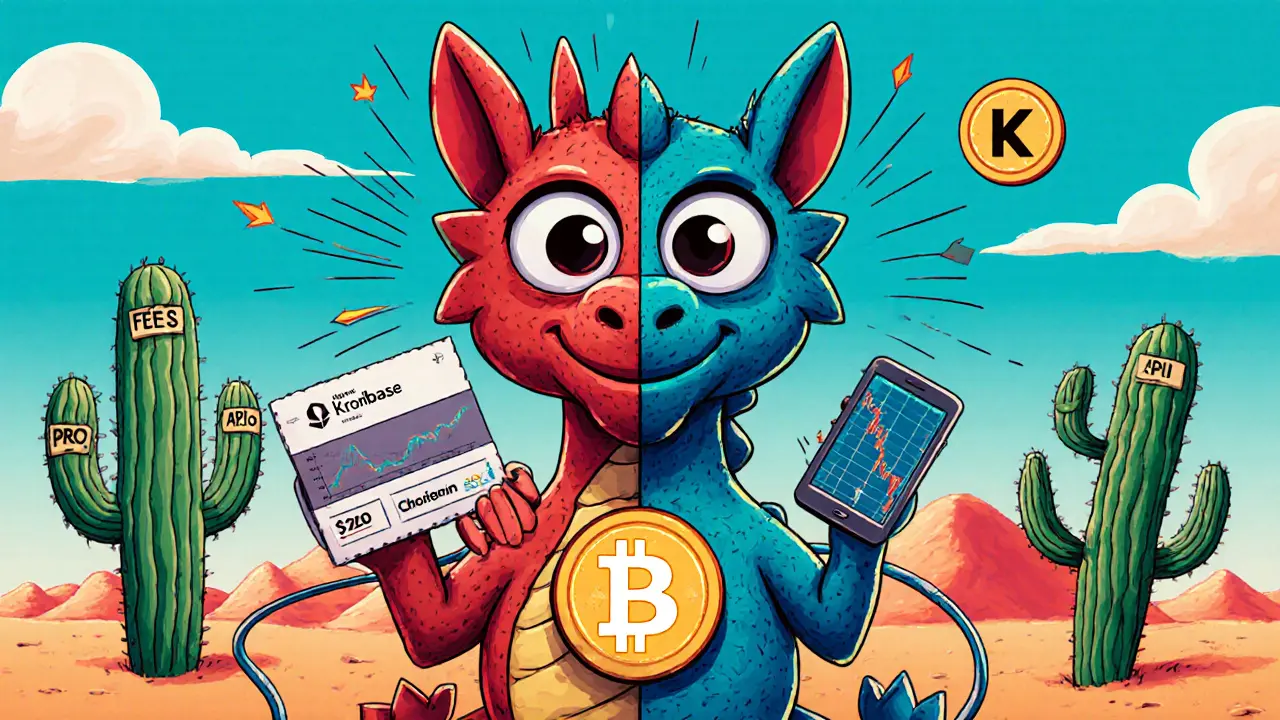
Beginners Need Simplicity. Pros Need Control.
Coinbase nailed the beginner experience. Their interface is clean, intuitive, and doesn’t overwhelm you with charts and indicators. You can buy crypto in under 60 seconds. NerdWallet gave them ‘Best for Beginners’ in 2025. Their $200 bonus for new users who trade $100 or more is a real incentive-if you’re just dipping your toes in.Kraken’s interface, especially Kraken Pro 3.0, is built for traders. It has advanced charting, limit orders, stop-losses, and API access. But it’s not beginner-friendly. The learning curve is 12.7 hours, according to TokenMetrics’ testing. That’s not a flaw-it’s a feature. If you want to trade like a pro, you need tools that let you control every variable.
Robinhood is the middle ground: simple interface, but no real trading tools. No stop-losses. No limit orders. Just buy and sell. It’s fine for casual users, but you’re giving up control.
Staking and Earning Interest Are Now Standard
You don’t just trade crypto anymore-you earn from it. Uphold leads in staking, earning a 4.8/5 rating from NerdWallet. They offer competitive APYs on Ethereum, Cardano, Solana, and even Tezos, with no minimum balance. You can earn 3-6% annually just by holding.Kraken and Coinbase also offer staking, but with fewer options and slightly lower yields. Kraken’s staking is more transparent-you can see exactly when rewards are distributed. Coinbase hides some details behind their ‘Earn’ tab. If earning passive income matters to you, Uphold and Kraken are your best bets.
Customer Support Is Your Safety Net
When something goes wrong-your deposit doesn’t show, your withdrawal gets stuck, your account gets locked-you need help fast. Kraken delivers. Their 24/7 live support resolved test cases in 22 minutes on average, according to Money.com’s October 2025 mystery shopping. Reddit users confirm it: u/CryptoTrader87 said, “Kraken’s support fixed my issue in 22 minutes-unheard of in this industry.”Coinbase takes 3.7 hours on average. Gemini? Over 14 hours. That’s not just slow-it’s risky. If you’re holding $10,000 in crypto and your account is frozen, every hour matters. Kraken’s support team is trained, responsive, and doesn’t bounce you between departments.
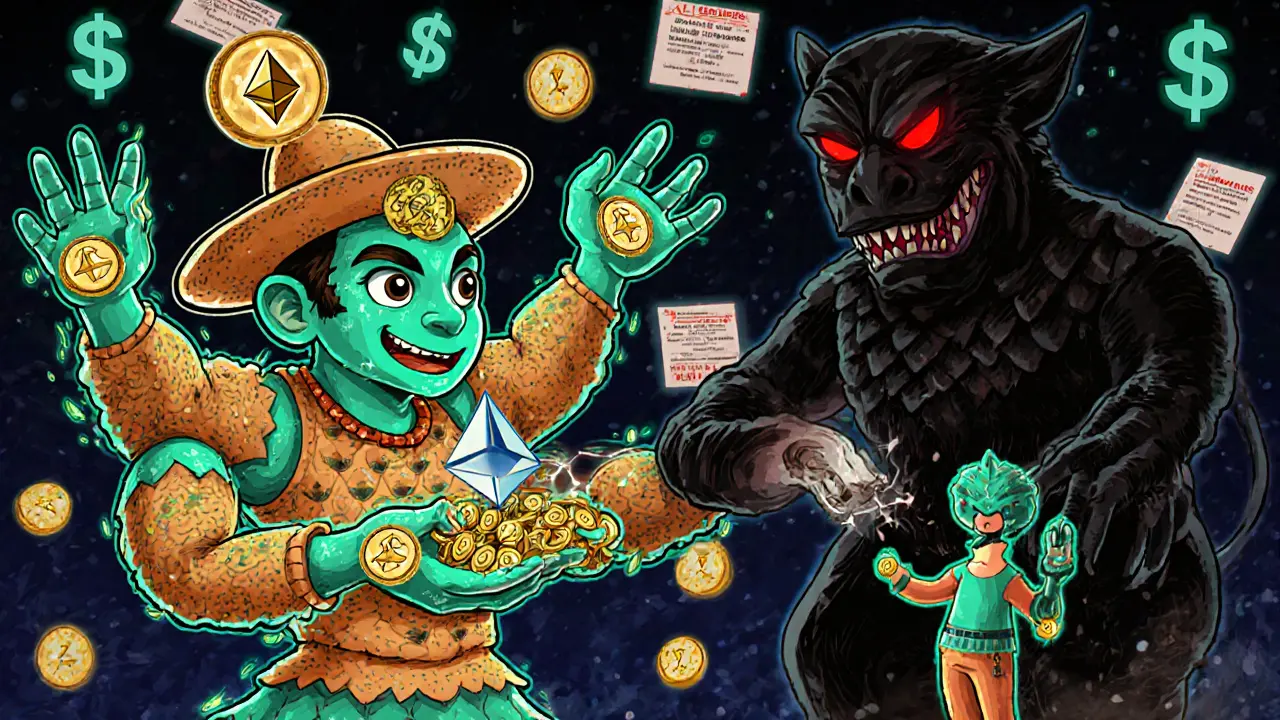
What About New Features in 2025?
The big players aren’t standing still. Kraken launched Kraken Pro 3.0 in October 2025 with AI-powered trading signals and expanded derivatives. Coinbase’s Advanced Trade 2.0 reduced slippage by 18.7%. Gemini is testing ZK-Rollups to cut withdrawal times from days to minutes.These updates matter because they show commitment. Kraken spent $47.8 million on compliance last year. That’s not marketing-it’s infrastructure. It means they’re building for the long haul, not just chasing trends.
Who Should Use What?
- Beginners making small, occasional buys: Coinbase. Simple, safe, with a bonus to get you started.
- Active traders who want low fees and advanced tools: Kraken Pro. Best overall for performance, security, and features.
- Altcoin enthusiasts who want variety: Uphold. Best for staking and holding less common tokens.
- U.S.-only users who want low fees and decent selection: Binance US. But know you’re missing out on global coins.
- Anyone looking for $0 commissions: Robinhood. But don’t expect real trading tools or support.
There’s no single ‘best’ exchange. There’s only the best exchange for you. If you’re not trading daily, skip Kraken Pro. If you’re holding long-term, prioritize security over fees. If you want to earn interest, go for Uphold or Kraken’s staking.
Final Advice: Don’t Put All Your Crypto in One Place
Even the best exchanges aren’t banks. For large holdings, use a hardware wallet like Ledger or Trezor. Keep only what you’re actively trading on an exchange. Kraken’s security is excellent-but it’s still a third party. Your keys, your crypto. That’s the golden rule.Check the latest fee schedule, staking rates, and withdrawal limits every few months. Platforms change. Your strategy shouldn’t be set in stone.
What’s the safest crypto exchange in 2025?
Kraken is the safest crypto exchange in 2025, based on its 12-year track record with zero major breaches, 95% of funds in cold storage, monthly proof-of-reserves, and military-grade encryption. Coinbase and Gemini follow closely, with strong security protocols and insurance coverage. Avoid unregulated offshore exchanges-over 127 users lost an average of $3,850 each in 2025 to scams.
Which crypto exchange has the lowest fees?
Kraken Pro offers the lowest fees for active traders at 0.16% maker and 0.26% taker rates. Binance US is close behind at 0.1%-0.2%. Coinbase charges up to 4% depending on payment method, making it expensive for frequent trading. Robinhood has $0 commissions but hides costs in order flow payments, leading to worse trade execution.
Is Coinbase good for beginners?
Yes. Coinbase is the best crypto exchange for beginners in 2025. Its simple interface lets you buy crypto in under a minute, and it offers a $200 bonus for new users who trade $100 or more. NerdWallet rated it ‘Best for Beginners’ in September 2025. But if you plan to trade often, its high fees make it costly over time.
Can I stake crypto on these exchanges?
Yes. Uphold leads in staking with the highest NerdWallet rating (4.8/5) and no minimum balance. Kraken and Coinbase also offer staking for Ethereum, Cardano, Solana, and other major coins, with APYs between 3%-6%. Staking lets you earn passive income just by holding-just remember to check the lock-up periods and reward frequency.
Should I use Binance US or the global Binance?
Use Binance US if you’re in the U.S.-it’s the only legal version. The global Binance is blocked in the U.S. and violates SEC rules. Binance US has fewer coins and lower trading volume than its global counterpart, but it’s compliant and safer. Avoid using offshore versions-they’re not regulated and carry high risk.
How long does account verification take?
Verification times vary. Robinhood approves users in under 15 minutes for 92% of cases. Kraken takes 24-48 hours because they do thorough checks, but this unlocks higher withdrawal limits. Coinbase usually takes 1-3 days. If you need fast access, Robinhood wins. If you want higher limits and better security, Kraken’s wait is worth it.
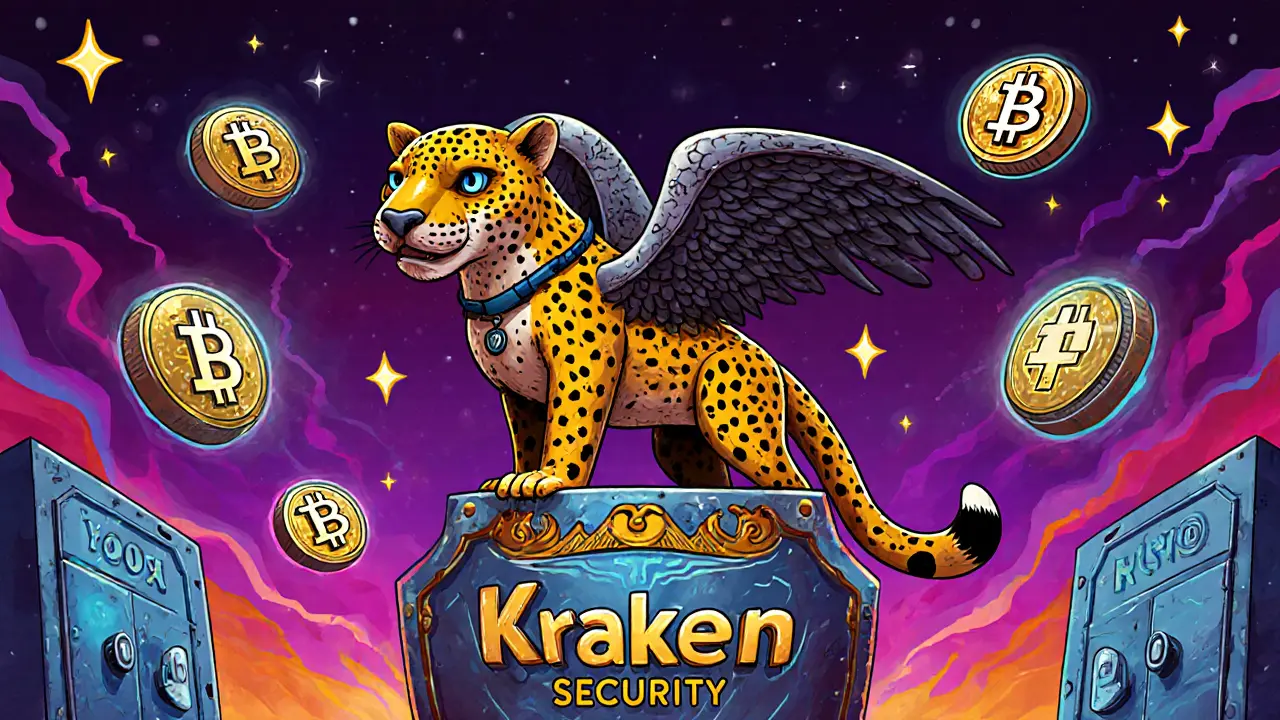







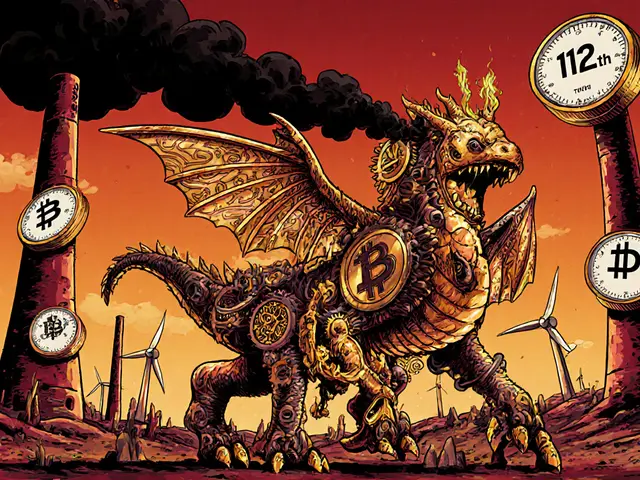


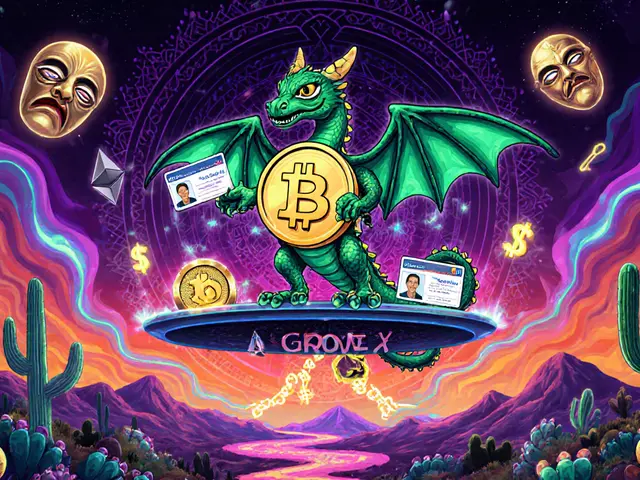
11 Comments
Interesting breakdown. I'm from India and found Kraken too hard to access due to KYC. Binance US works but feels limited. Uphold is my go-to for staking-simple and reliable.
i think kraken is overhyped… like yeah they dont get hacked but their app crashes every time i try to sell during volatility 😭
Bro Kraken Pro 3.0 is next level. The AI signals saved me during the SOL dump last week. I went from red to green in 48 hours. If you're trading more than $5k/mo, stop wasting time on Coinbase. The fee difference is insane.
Just wanted to say thank you for mentioning Uphold. I’ve been holding XRP since 2021 and was scared to stake it anywhere else. Seeing it listed here made me feel seen. Also, their customer service actually replied to my email in 8 hours-unreal.
lol i just use robinhood bc its easy and i dont wanna think. why do people overcomplicate this? its just digital money 😴
For beginners: Coinbase’s interface is indeed the most intuitive. But I’d add a note about the $200 bonus being a one-time offer-don’t wait too long. And always use two-factor authentication, even if it’s annoying.
U.S. only? That’s all you care about? What about the rest of the world? Kraken’s cold storage is great, but I’m in Europe and MiCA doesn’t even cover half the coins listed here. This whole post feels like American crypto colonialism. And don’t get me started on how Binance US is just a watered-down version of the real thing. You’re not safe-you’re just restricted.
Wait-so Kraken’s support takes 22 minutes? That’s insane! I had a withdrawal stuck for 11 days on Gemini… and they told me to ‘check my wallet address.’ Like… duh? I’m not an idiot. Kraken deserves every bit of praise. I’m switching tomorrow.
The philosophical underpinning of this article is not merely technical-it is existential. In an age where financial sovereignty is increasingly abstracted behind corporate interfaces, the act of choosing an exchange becomes a moral act. To entrust one’s digital wealth to an entity that does not publish proof-of-reserves is to surrender agency. To prioritize convenience over transparency is to accept a quiet form of financial serfdom. Kraken does not merely offer a service-it offers a covenant. The user, in turn, must become a vigilant custodian-not a passive consumer. This is not crypto. This is civilization.
While Kraken is indeed the most secure, I would like to add that for users in emerging markets, the real challenge is fiat on-ramps. Kraken does not support UPI, Paytm, or other regional methods. Binance US may be limited, but it is still more accessible than Kraken for many. Regulatory compliance should not be a luxury reserved for Western users. We need global inclusivity in security standards, not just Western-centric benchmarks.
Does anyone know if Kraken’s AI signals work for altcoins like $PEPE or just the big ones? Asking for a friend… who is me. I lost $200 on a ‘high probability’ signal last week. 🙃